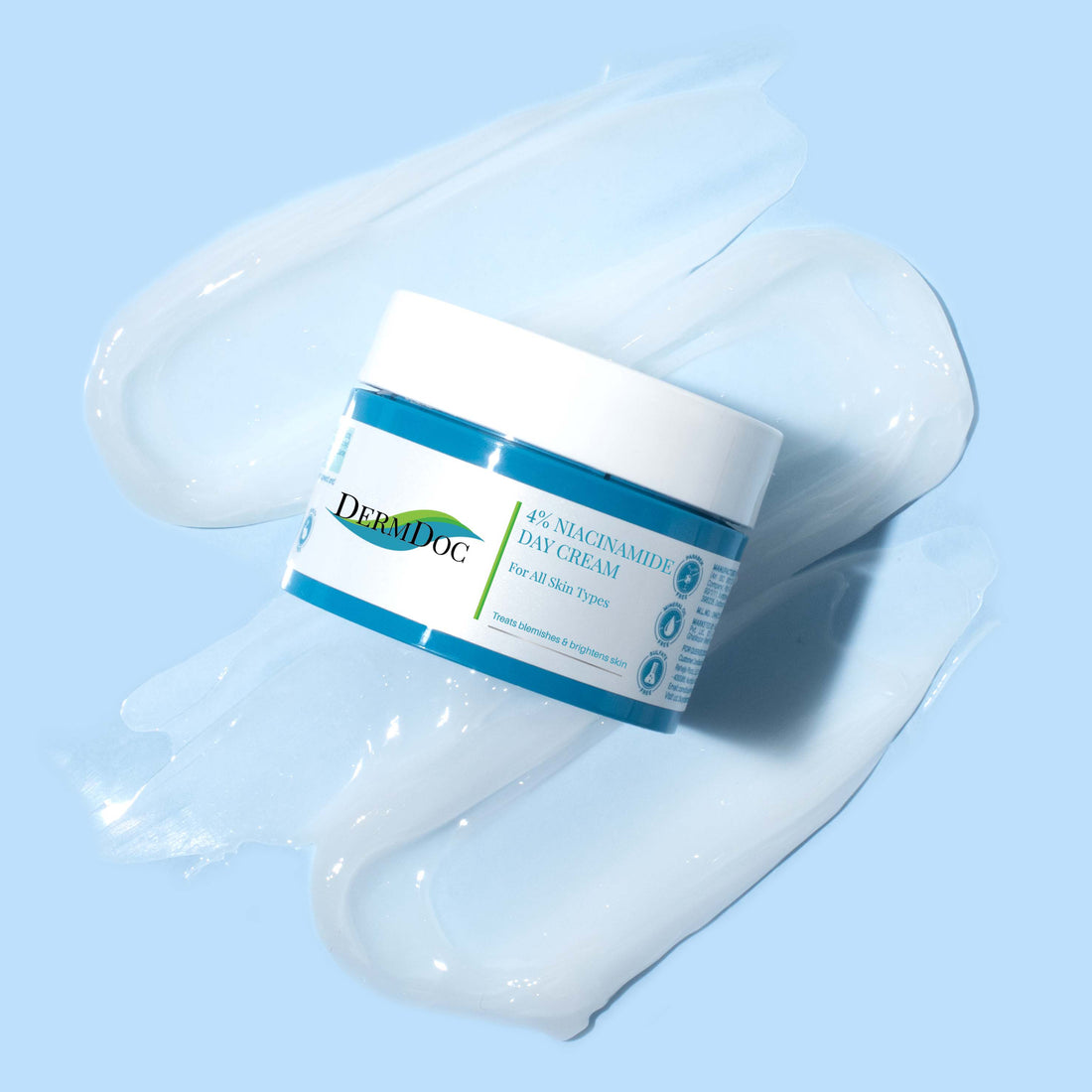If you are at all interested in skincare, you must have heard the word “niacinamide” about a million times in the past year. But what is it exactly? Let’s take a look.
What is Niacinamide?

Whether you took biology in the 10th grade or not, it’s common knowledge that the skin is the human body’s largest organ. Therefore, it is made up of several elements that don’t come up in regular conversation– or skincare ASMRs on YouTube! But, one of the key elements that bind the skin cells together is ceramides.
Ceramides are elements that are artificially created in laboratories as well, and are often used as a popular skincare ingredient in thick moisturisers and creams for dry skin. But, that’s not all. Their natural production within the skin can also be stimulated by vitamin B3.
To add to this, vitamin B3 helps prevent the loss of humidity in the skin and retain its natural moisture and plumpness. When you are aiming for youthful skin, this is something you want to focus on!

Niacinamide is one of the easiest ways that our skin can accept vitamin B3 when applied topically. Which means that moisturisation and plumpness is a key benefit of this ingredient. But that’s not it! One of the biggest advantages of using niacinamide topically is its ability to treat acne scars.
How does it do that?
Let’s run through that, and a few other frequently asked questions related to this ingredient.
Does Niacinamide Help With Acne Scars?

The short answer is yes! But if you want the science behind it, then you have to remember the basics … Niacinamide is made up of vitamin B3, which, guess what, is the key behind carrying out the entire process of skin cell renewal.
Scars are nothing but hyperpigmentation because of skin damage. When you apply niacinamide to skin topically, what ends up happening is that the rate of skin renewal increases considerably due to the cell growth getting boosted. And voila, suddenly, your scars are disappearing a whole lot faster!
What’s the best way to use Niacinamide?
We keep mentioning niacinamide being used topically, but is there a specific formulation in which it works best?
Well, any active skincare ingredient is best used in a stay-on format, in which case it wouldn’t need to be washed off and can take its time getting absorbed into the skin and working its magic.
The two best ways you can use niacinamide would be in the form of a niacinamide cream or a niacinamide serum.
Niacinamide Cream
We recommend the DermDoc 4% Niacinamide Day Cream, a niacinamide cream trusted by hundreds of people to treat their scars.
This niacinamide cream is meant to be used during your A.M routine, and be sealed under your sunscreen. Check out this article to find out more about how to correctly apply sunscreen!
Niacinamide Serum
Serum is a much more concentrated version of treatment than a cream is. As a result, it is much stronger and also tends to make skin more sensitive.

Niacinamide in general is a gentle ingredient though, so whether it is used during your AM or PM routine, it is unlikely to make your skin more photosensitive. Sunscreen is still a must though – check out this article as to why!
We encourage you to try the best niacinamide serum in India based on reviews, the DermDoc 10% Niacinamide Face Serum. According to past users, it is nourishing for the skin, light, easily absorbed and good for daily use.
But because niacinamide serum is so concentrated, remember that sometimes it may cause purging or reactions in certain skin types. Which brings us to …
Does Niacinamide cause purging?
Niacinamide is an extremely gentle ingredient. Vitamin B3 is in general gentle. Being a derivative of the same, niacinamide is unlikely to cause a purge. But, it may be the case in certain skin types if your skin is sensitive and you have never used niacinamide before.
If the purge does happen, remember that it’s completely okay. It happens with everyone. Besides, it won’t take more than a little while to clear up. Purging is often a sign that the ingredient is working.
When one gets acne, it is common that they also turn to an antibacterial ingredient like salicylic acid (check out this article about the relationship between humidity and acne, which also elaborates how exactly salicylic acid will benefit an acne-prone skin type). You may then be wondering …
Can I use niacinamide and salicylic acid together?

Again, the answer is a resounding yes!
This is because niacinamide is, again, a very gentle chemical and doesn’t have ill reactions when mixed with even the harshest substances.
Salicylic acid is a beta hydroxy acid, which means that it is a chemical exfoliator. However, beta hydroxy acids are usually much gentler than their alpha hydroxy cousins, like glycolic and lactic acid. As a result, salicylic acid is one of the only exfoliators that can actually be used every single day. But at the same time, it won’t really cause an ill reaction when mixed with something like niacinamide.
However, even as a standalone product, if you are using salicylic acid, it is likely to cause a bit of purging if you are using it for the first time and your skin isn’t used to it. Don’t panic and be prepared! Also, have patience. It is the quality that will pay off most when it comes to skincare.
Can I use niacinamide and vitamin C together?
Vitamin C helps when it comes to skin brightening. Vitamin C and niacinamide actually are already combined in several products. It is a combination that makes a lot of sense dermatologically speaking and doesn’t have any harmful effects.
However, again, keep in mind that your skin already has to be suited to vitamin C. If it isn't, it is likely to cause a little bit of a purge at the very beginning.

Hopefully this guide is something that sheds a bit of clarity on niacinamide for you. Remember to always have patience, and don’t forget to use your sunscreen no matter what, because otherwise all the efforts you put into your skincare routine will have been wasted!


